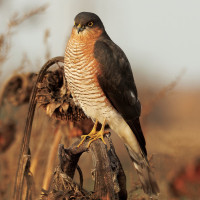Opis
De Wei van Brasser and Doornvlak are located in a typical dune area with forest and open shrubbery. Especially in the summer a very nice area to stroll around. In the lakes many water birds can be found, including zausznik, cyranka and perkozek. In the winter you have a chance on spotting a srokosz.
_________________________
Nederlands: De Wei van Brasser en het Doornvlak zijn twee fraaie meertjes in het Noordhollands Duinreservaat. Het is een typisch duingebied met bos en open struweel, vooral in de zomer een erg fijn gebied om doorheen te struinen. In de meertjes zijn dan veel watervogels te vinden waaronder zausznik, cyranka en perkozek. In de winter kun je hier zomaar een srokosz aantreffen.
Szczegóły
Dostęp
You can park at one of the entrances to the dune reserve. Click on the P in the map for directions to the car park. Parking is free, but a Duinkaart (Dune card) is required for access to the reserve (€ 2 per person per day). The Duinkaart can be obtained from the machine in the parking lot or can be ordered online (see the link below). The walking route indicated on the map is approximately 5 km long.
_________________________
Nederlands: Parkeren kan bij een van de ingangen van het duinreservaat. Klik op de P in de kaart voor een routebeschrijving naar de parkeerplaats. Parkeren is gratis, maar voor toegang tot het gebied is wel een Duinkaart nodig (€ 2 per persoon per dag). De Duinkaart is te krijgen bij de automaat op de parkeerplaats of online te bestellen (zie de link beneden). De wandelroute die is aangegeven op de kaart is ongeveer 5 km lang.



